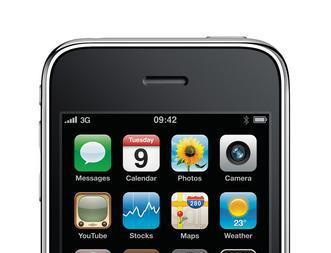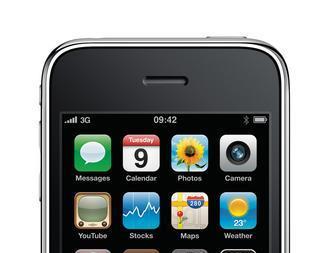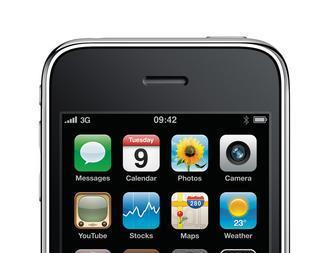Many of us will be waking up on Christmas morning to find a shiny new gadget under the tree. But you don’t have to reserve all your excitement for the latest games console. We report on how claims professionals can make the most of hi-tech devices and technologies
Christmas has come and it is time to release the child within. Forget boozy work parties and scoffing mince pies, unwrapping those colourfully packaged presents remains the Yuletide highlight for many. But what should fill the stocking of today’s claims professional?
Recently, we have seen an explosion in new technologies and gadgets that have the potential to transform the claims sector. So it seems a perfect opportunity for Insurance Times to look at the top stocking fillers that should be under every claims expert’s tree …
The smartphone (with the right apps)
While most savvy claims professionals might already have a smartphone, these nifty little gadgets are not just for show. With the right software, they can dramatically reduce a claims caseload. First, the ability to use digital dictation via smartphones means that reports can be made right outside a policyholder’s house and then instantly uploaded to the company’s workflow database. In addition, a smartphone will allow you to record conversations with policyholders, which can help make the claims process more transparent.
Another benefit is that smartphones can speed up notifications. Once a call has been made, the claims handler can instantly notify the claim on the company database, where it can be viewed by insurers and brokers within minutes.
Photographs can also be taken onsite and then instantly uploaded, while specialist software can enhance images to highlight certain features. This accelerates the decision-making process and can lead to a speedier settlement.
Merlin director of loss adjusting services Russell Crewe believes that, when it comes to smartphones for claims experts, the BlackBerry is number one. “We opted for BlackBerry technology. It is flexible and very adaptable. It has very good security and it is supported by the majority of the software houses that provide the innovations, which can make our job more efficient.”
Crewe says that the smartphone has the ability to transform the working lives of claims professionals, and adds that while most firms have this technology at their disposal, they may not be using it to its full potential.
And the choice of smartphones is growing. Apple’s iPhone and BlackBerry, from Research in Motion, dominate the market but both face increasingly stiff competition from smartphones using Google’s Android operating system.
Take a tablet – and go truly mobile
While hand-held smartphones are useful for processing run-of-the-mill claims, such as escape of water, the new tablet computers may be better for higher volume and more complex claims. Tablets are small, thin computers have no lid or physical keyboard. Information is entered using a touch-screen rather than a keyboard or mouse. The most high-profile example is the Apple iPad.
“It is a nice touch-screen device that allows easy navigation. The value for loss adjusters is that it is good to have it in the field. You can take digital photographs with a camera that you can then easily integrate into your tablet,” says research firm Celent’s senior insurance analyst Catherine Stagg-Macey.
Another major plus point is that the claims handler can easily access geographic data to pinpoint a location. Ordnance Survey banking, finance and insurance sector manager Sarah Adams explains that claims organisations can help loss adjusters to reach their destination more quickly by delivering the key geographic data direct to mobile devices with a GPS chip, such as a tablet.
Ditch the biro and go digital
Digital pens look and behave exactly like a pen – so this particular device is easy for even the most stubborn technophobe to understand. The pen captures the handwriting or brush strokes of a user, and digitises them so that they can be read on a computer monitor. Some digital pens can be used with tablet computers.
Loss adjuster Questgates’ service delivery director Greg Laker is a fan. “It looks just like a pen. You go out and fill out a form and you can transfer that data from site via a 3G phone and it is uploaded to our system,” he says.
According to research by Celent, smartphones and tablet computers can still present problems for some insurers. The cost of supplying and maintaining laptops is high, while smartphones’ connectivity can be poor for claims handlers in remote areas. Digital pens offer an alternative.
Sky’s the limit, thanks to satellite technologies
A good satellite phone and access to satellite photography is arguably a must-have for any claims professional dealing with disaster recovery. A satellite phone is a type of mobile phone that connects to satellites rather than ground-level antennae. This means that when the loss adjuster is in a densely flooded region where travel is difficult, they can overcome connection problems that can occur with other mobiles. Satellite phones have similar functionality to mobile phones while providing low-bandwidth internet access.
Regular contact with aerial map providers can avoid headaches when trying to assess the extent of damage within an area. “I have used satellite photographs to measure areas of crops affected on liability claims, and satellite video-phones to interview contractors in remote and inhospitable locations,” says Cunningham Lindsey’s technical director, Jonathan Clark. “They are both amazing tools.”
Get hi-tech help with valuing claims
Quantum assessment tools, like the ISO Claims Outcome Advisor and CSC’s Colossus, allow for an evaluation of personal injury claims by allowing the claims handler to put in the details of the injury, the treatment received and the prognosis of those injuries.
Claims experts believe the tools help ensure that insurers do not over- or under-settle a claim. “The system will basically provide a valuation,” explains loss adjuster Garwyn’s deputy chief adjuster, Michael Maher. “This is a means of trying to ensure that settlement of a claim is fully consistent with cases that have gone before.”
Harness the cloud and access data remotely
The cloud is a term used for internet-based computing, where shared resources, software, and information are provided to computers and other devices on demand. More insurers and loss adjusters will be entering the cloud this year.
“Data storage clouds provide simple yet secure file-sharing and remote access,” explains loss adjuster Davies’ director of markets, Darren Coombes. “I think that we will be using data clouds to share diaries, collaborate more efficiently and make sure everyone turns up at the right time with the right information.”
Go virtual with the help of an avatar
Think of avatars and you would be forgiven if James Cameron’s blockbuster movie springs to mind, rather than anything to do with insurance. But according to Celent, the age of avatars – in the form of 3D digital assistants – is not far off.
The gaming world of virtual reality, marked by cult successes such as the role-playing game World of Warcraft, is moving into the business mainstream. The idea is that virtual space can offer companies an efficient way of communicating, training, or just interacting with large groups of people.
The world of avatars and virtual realities is maturing, and as the consumer appetite for online interaction increases, Celent expects to see increased interest in applying digital assistants to customer-facing activities.
One example of a virtual assistant is Anna, on the website of home products company Ikea. Anna answers customers’ questions about products and services. A virtual assistant responding to a policyholder’s queries following the notification of a claim could be the perfect asset for the time-pressed claims professional. IT
Hosted by comedian and actor Tom Allen, 34 Gold, 23 Silver and 22 Bronze awards were handed out across an amazing 34 categories recognising brilliance and innovation right across the breadth of UK general insurance.













































No comments yet